
Is Feta the same as goat cheese? Although they are both white cheese types, many people wonder if they are interchangeable.
Feta and goat cheese are both quite popular, yet they can be easily confused at first glance because of their similar appearance.
Color and consistency are similar, but the type of milk utilized in each product’s creation can vary.
To which the question arises, “ Is goat cheese the same as feta?”
Feta Cheese Vs. Goat Cheese
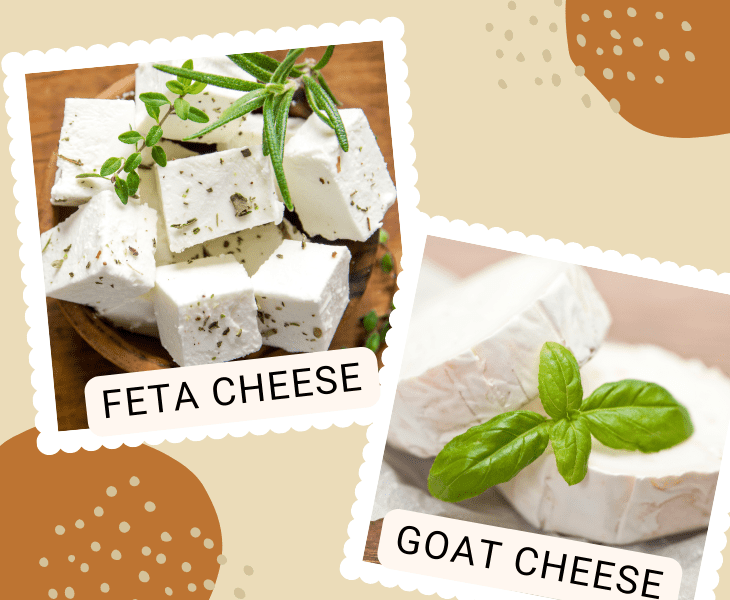
Both these cheese varieties have an iconic status in the United States. But, are goat cheese and feta the same?”
Well, you will have to compare both based on different factors, such as:
- Origin
- Production Procedures
- Flavor
- Texture
- Fat Content
More about the Origin of Goat Cheese and Feta
To understand the difference between goat cheese and feta, it is important to have some information about its origin.
Feta Origin

The Greek-born cheese feta has long been a mainstay in Mediterranean cuisine.
In the 17th century, the cheese was given its current name, which comes from the Greek word for “slice,” a reference to the way the cheese was traditionally cut into wedges before being stored in barrels.
Cheese made from sheep’s milk was first mentioned in Homer’s epic poem “The Odyssey” from the eighth century B.C.
However, feta’s true ancestry remains a mystery.
Fact: Goat cheese is great for those looking to cut sodium, just like Emmental, swiss and Wensleydale.
Goat Cheese Origin
Goat cheese, also known as chèvre, has been made for ages by a wide variety of cultures thanks to the widespread use of goats as farm animals.
The word “chèvre” has its roots in pre-modern France, in the eighth century.
Culture Magazine claims that the Moors abandoned their goats as they fled France after the Battle of Tours.
The journal claims that over the course of a thousand years, French farmers began nurturing the goats and manufactured cheese from their milk.
Fact: Since both goat and feta cheese are soft in nature, you can always whip them into a dip, especially by mixing garlic and fresh herbs.
Production Procedures of Goat Cheese Vs Feta
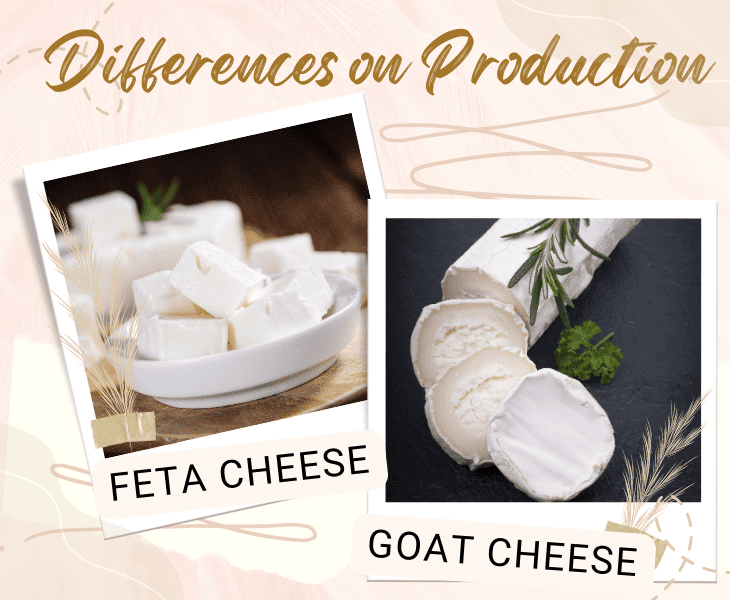
When you talk about the production procedures, you notice a degree of similarity.
However, the major difference is that unlike goat cheese, feta can also be made using sheep’s milk.
Feta Cheese Production Procedure
Producing feta cheese entails removing the curds from the available whey and then pressing them into blocks.
The curds are then sliced and salted before being aged in brine.
The aging time is a couple of months in the refrigerator and up to many weeks at room temperature.
Goat Cheese Production Procedure
Although many varieties of cheese can be made from goat’s milk, the chèvre most commonly found in the United States is a mild, fresh form.
When goat’s milk is heated, a bacterial culture and rennet are added to create curds.
They are then extracted from the whey and filtered to convert into a creamy consistency.
The cheese is usually sold in the form of a log and is often flavored with a blend of herbs and spices.
An Important Thing to Remember

Cheese made from goats is often made with solely goat milk. On the other hand, feta cheese is made from either sheep’s milk or a mixture of goat’s milk and sheep’s milk.
You need to bear in mind though that feta may not include more than 30% goat milk.
Fact: Feta made entirely from sheep's milk has a more subtle flavor than mixed feta.
Texture of Goat Cheese Vs. Feta
Paying attention to the texture of both goat and feta cheese may help you identify how they are different from each other.
The Texture of Feta
Even though it is a soft cheese, feta has a dry, crumbly texture.
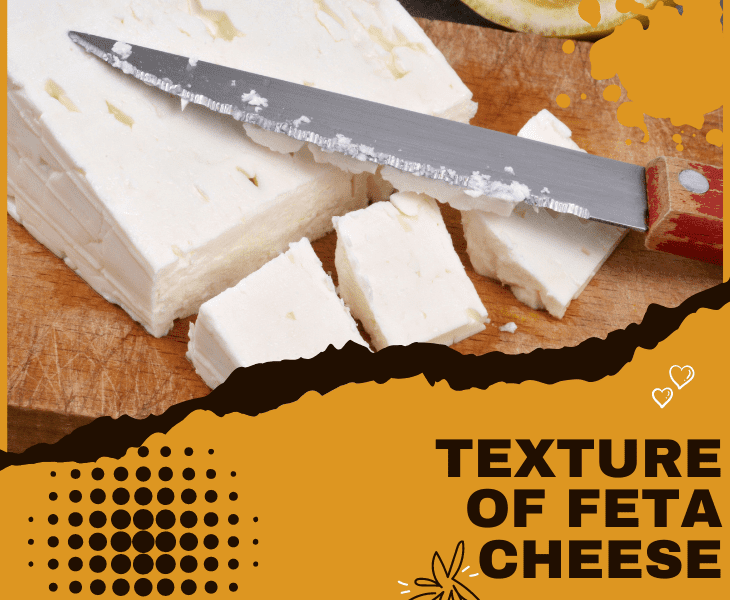
Greek feta, in contrast to other soft cheeses like mascarpone and cream cheese, is notoriously difficult to spread.
The truth is that the brine that covers feta might make it feel slimy, but if you get past that, you will find a hard, crumbly cheese.
The Texture of Goat Cheese
Feta has a slightly grainy texture, yet it is neither gritty nor crunchy. Goat cheese, on the other hand, is creamier.
It means you can easily spread it at room temperature. But, remember, it will crumble when chilled.
Fact: It is a good idea to avoid goat cheese when pregnant because it has a higher risk of listeria.
The Flavor of Feta Vs. Goat Cheese

To decide how goat cheese is different from feta, it is important to compare their flavor profile as well.
Flavor Profile of Feta
It has a salty, sour taste that can be anywhere from subtle to intense.
So, yes, feta is often briny and sour; however, this characteristic can shift based on different factors, including:
- The cheesemaker
- The area where it was made
- The use of goat or sheep milk
- The length of time it was cured
Feta prepared solely from sheep’s milk has a richer, buttery flavor, whereas feta made with goat’s milk has a tangier, crumblier texture.
Flavor Profile of Goat Cheese
The first thing you will notice is that goat cheese lacks feta’s saltiness, making it a more versatile alternative.
Yes, it is sour, but with a creamier texture than feta. Nevertheless, it is also possible to feel some sharp, lemony undertones.
And as it is also rather creamy and soft, it works great with sandwiches, salads, and charcuterie boards.
Fat Content of Goat Cheese Vs. Feta
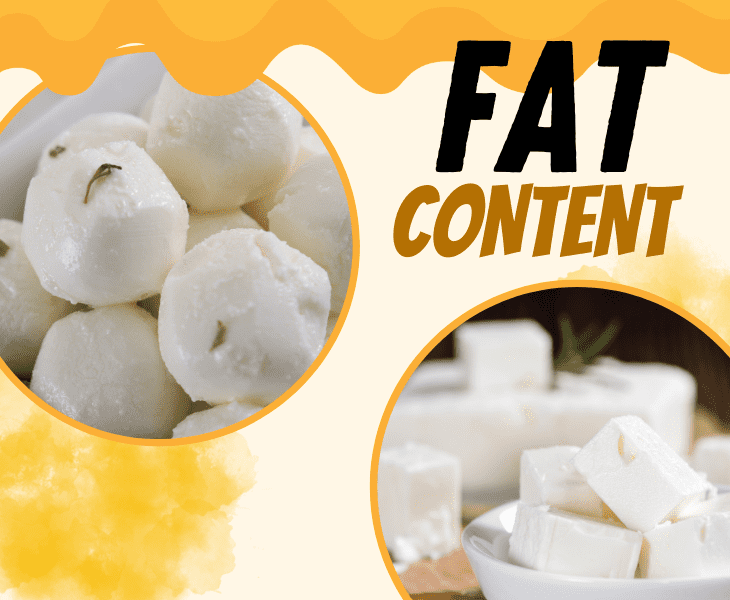
When going for cheese, it is essential to pay attention to its fat content, and the same holds when deciding between feta and goat cheese.
Fat Content of Feta
Comparatively, feta has less fat and fewer calories than other aged cheeses like parmesan and cheddar.
The same amount of parmesan or cheddar cheese (28 grams) has over 110 calories and 7 grams of fat.
But the same amount of feta cheese provides you with only 6g of fat with 74 total calories.
Fat Content of Goat Cheese
Similar to edam and brie, soft goat’s cheese has about 8 grams of fat per ounce and is about as salty as camembert.
Feta, which is traditionally prepared from sheep’s milk or a combination of goat and sheep milk, is lower in fat.
Similarly, ricotta and mozzarella have a lower fat content than goat cheese.
The Healthiest Cheese Options to Consider
Both goat and feta cheese come from the dairy category, yet their diverse compositions and resulting attributes make them very different from one another.
But, are they good for you if you are looking for a healthier cheese option? Let’s find out now.
The Healthier Cheese Option
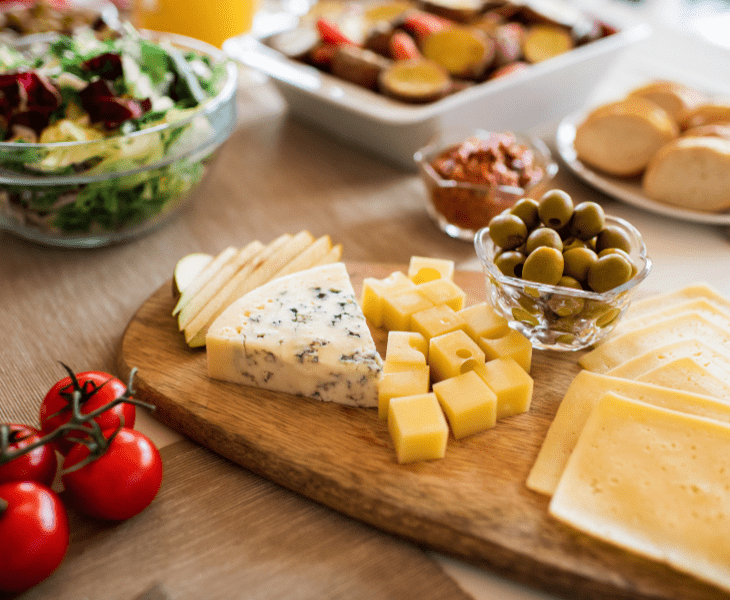
In case you are trying to watch your weight, fresh cheese is your best bet.
It means you can opt for anything like:
- Feta
- Goat cheese
- Cottage cheese
- Ricotta
They work great because they utilize cultural acidification, chemical acidification, and high heat treatment to coagulate milk and cream.
They also contain a negligible amount of cholesterol and fat.
Picking the Best Cheese for You
When it comes to finding the best cheese, it all depends on what you want to achieve.
For instance:
Ricotta and cottage cheese are good sources of protein and are usually lower in calories.
For instance, half a cup of cottage cheese contains about 110 calories.
Ricotta is higher in calories (180) but is rich in calcium.
Feta is one of the lowest-calorie cheeses, despite its high sodium content.
Because of its robust flavor, it can often be used in less quantities than milder cheeses.
On the other hand, goat cheese has a rather mild flavor than feta but is still low in calories and fat percentage.
Depending on its preparation method, it may contain probiotics, which are beneficial microorganisms for the digestive system.
Important Consideration: Is Feta the Same as Goat Cheese or Not?
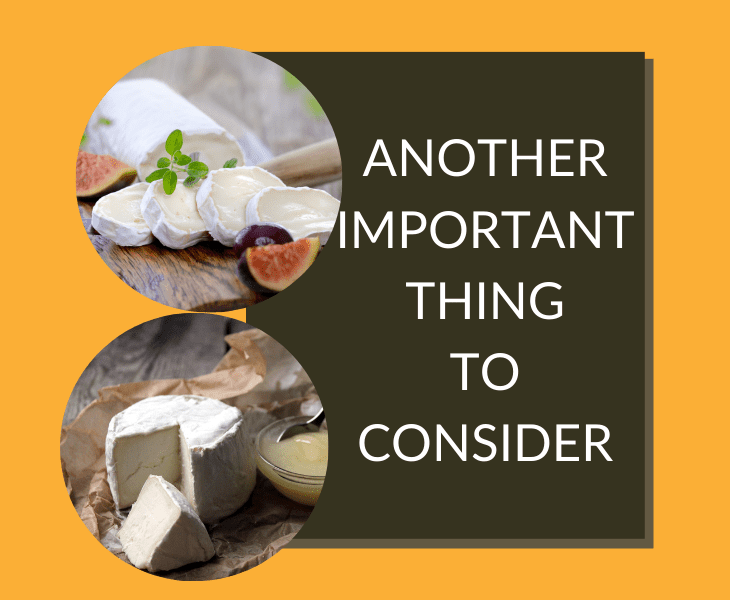
If you are looking for a cheese with great taste and fewer calories, you can never go wrong with fresh mozzarella.
It also contains strains of probiotic bacteria, making it a great choice for those with digestive issues.
Fact: To deal with lactose sensitivity, you can put your money on hard cheeses, such as parmesan, cheddar, manchego, asiago, swiss, and pecorino romano.
Read Next: Do Mexican Restaurants Use Pasteurized Cheese?
Takeaway
Is Feta the same as goat cheese or not? Well, appearances can be deceiving; but the sort of milk used in making feta cheese makes a world of difference.
The fat content of feta cheese is often lower than that of goat cheese due to subtle differences in the production processes involved.
Nevertheless, goat’s cheese is superior for salads and sandwiches because of its slightly different texture.
